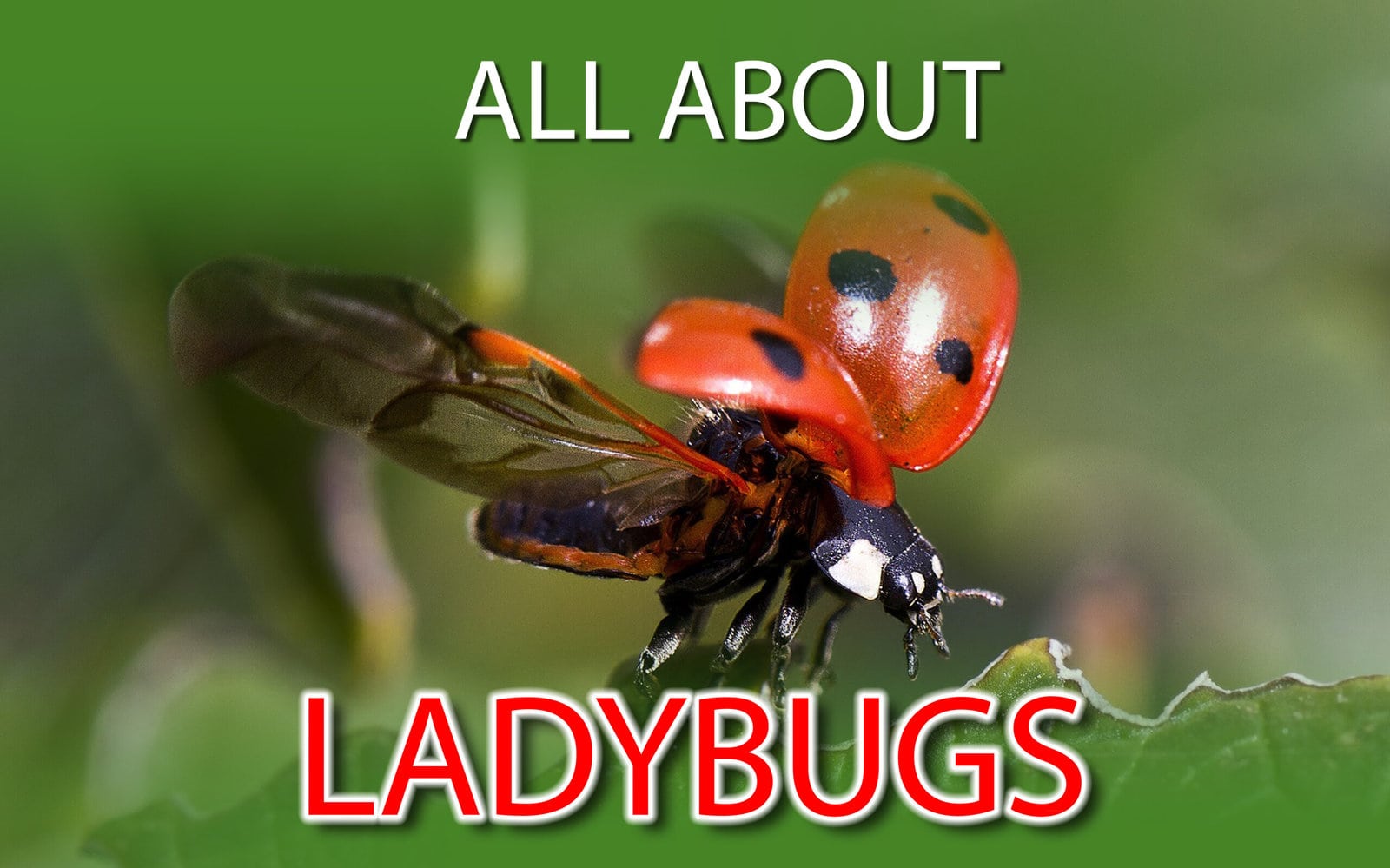The Miraculous Ladybug
Ladybugs. Ladybirds. Lady beetles. Many names and many legends have been attributed to these charming creatures. We like to think of them as the “gateway bug” to biodiversity in your garden or yard. Click here to watch our founder as he extols the virtues of the humble ladybug.
Let’s look at the A-B-C’s of ladybugs to learn more about these charming and beneficial creatures!
L is for LORE
How did ladybugs get their name? Like any famed superhero, ladybugs have a great origin story. Centuries-old legends tell of anxious farmers praying to God for relief from the hoards of aphids that were ravaging their crops. As if in reply, a swarm of red beetles swept across the land to devour the harmful pests. The grateful farmers associated their red appearance with the Virgin Mary – an answer to their desperate plea. Almost every European country came up with names that associated these beetles with God or Mary – Germany used “Marienkäfer”, which translates to “Mary’s Beetle”; the French called them “la bete a bon Dieu”, or roughly, “the beast of a good God.” Russians referenced their spotted appearance by calling them “Bozhya korovka” which translates to “God’s little cow”. The English used “Lady Bird” or “Lady Beetle”.
While they are, scientifically speaking, beetles, the term “Ladybug” seemed to catch on in the U.S., when they were introduced around the beginning of the 20th century.
A is for ALWAYS HUNGRY
Whether as adults, or while they move through their larval stage, ladybugs have voracious appetites. Their protein-rich diet fuels their life cycle, producing the next generation of hungry, hungry bugs. Which brings us to…
D is for DIET
What do ladybugs eat? Aphids! Aphids are harmful pests that cover your plants, leeching the stems and leaves of their vital juices. The aphids then produce a sticky liquid called honeydew, which acts as a dinner bell for your ladybugs!
As they sweep across plants, eating their fill of the aphids, ladybugs deposit their eggs on the underside of leaves. The larvae that emerge in a few days look a little like alligators – they are long and spiky, and they go to work right away to hunt down and eat the harmful aphid pests. A single larva may eat up to 50 aphids per day as they grow ready to pupate into adult beetles.
Y – “Y” are they important?
Ladybugs eat harmful pests, yes! But even better, they indicate a healthy vitality in your garden known as…
B is for BIODIVERSITY
Many of us have been taught throughout our lives that dousing plants in a chemical bath is the quickest and most effective method of removing aphids and other harmful insects.
But the truth is that using chemicals for pest control is kind of like chemotherapy for your yard. The pesticides kill every living thing, and then you are left hoping that the beneficial life reboots and replenishes itself in your garden. Many beneficial insects cannot recover from this, and without beneficial life in your garden, the harmful pests are free to return!
Ladybugs and other beneficial insects provide a nature-made defense against harmful pests. Rather than destroying life, the deployment of ladybugs attracts abundant, beneficial life to your plants.
U is for USEFUL
Ladybugs not only help you to rid your garden of harmful pests, but they also provide eye-catching entertainment and teachable moments for you and your family. Kids are drawn to these gentle beetles – ladybugs don’t bite – and by deploying them in your garden, you can teach the next generation that natural solutions to gardening will help restore health and beauty to our planet.
And, for those of you who may be a little superstitious, it is rumored that these beetles bring good luck! Long-believed to be talismans of fortune, ladybugs often display black spots on their shell. Count the number of spots to determine how many years of good luck you’ll have! Or, the number of months until your wish comes true! Create math games for your young ones as they enjoy watching these lovely bugs!
G is for GARDEN CENTER
Hurry to your local nursery or garden center to pick up a natural solution to your aphid troubles!
Organic Control has a passion for safely transporting and delivering live ladybugs to retail outlets, where customers may find them chilling out in the refrigerator. By taking them home and releasing them at dusk on affected plants, you will start the cycle of life that will help to rid your garden of aphids. Your garden center may also stock attractive and colorful ladybug houses, which provide shelter from the adult beetles from inclement weather and predators.
TIPS for getting the best results:
- Keep them refrigerated
- Release the ladybugs in small batches
- Hose down your affected plants first
- Release the live ladybugs on plants that have the most aphids
- Wait until dusk near the base of the affected plants, so that ladybugs won’t fly away
Whew – that’s it. L-A-D-Y-B-U-G!
At Organic Control, we envision a non-toxic future where adding life to our gardens will be the norm, and harmful toxins can be reduced or eliminated from the food we eat and the beautiful gardens we enjoy. Visit our website to learn more about ladybugs and other beneficial insects today!










